F1 Goldendoodle: Everything You Need to Know
Ever wondered about the charming and intelligent dog breed that’s been capturing hearts worldwide? Meet the Goldendoodle, a delightful hybrid breed born from the union of a Purebred Poodle and a Purebred Golden Retriever.
These dogs aren’t just about good looks; they’re known for their sharp intellect, impressive trainability, and an amiable nature that makes them instant hits in any household. It’s no surprise they’ve become a top choice for families everywhere.
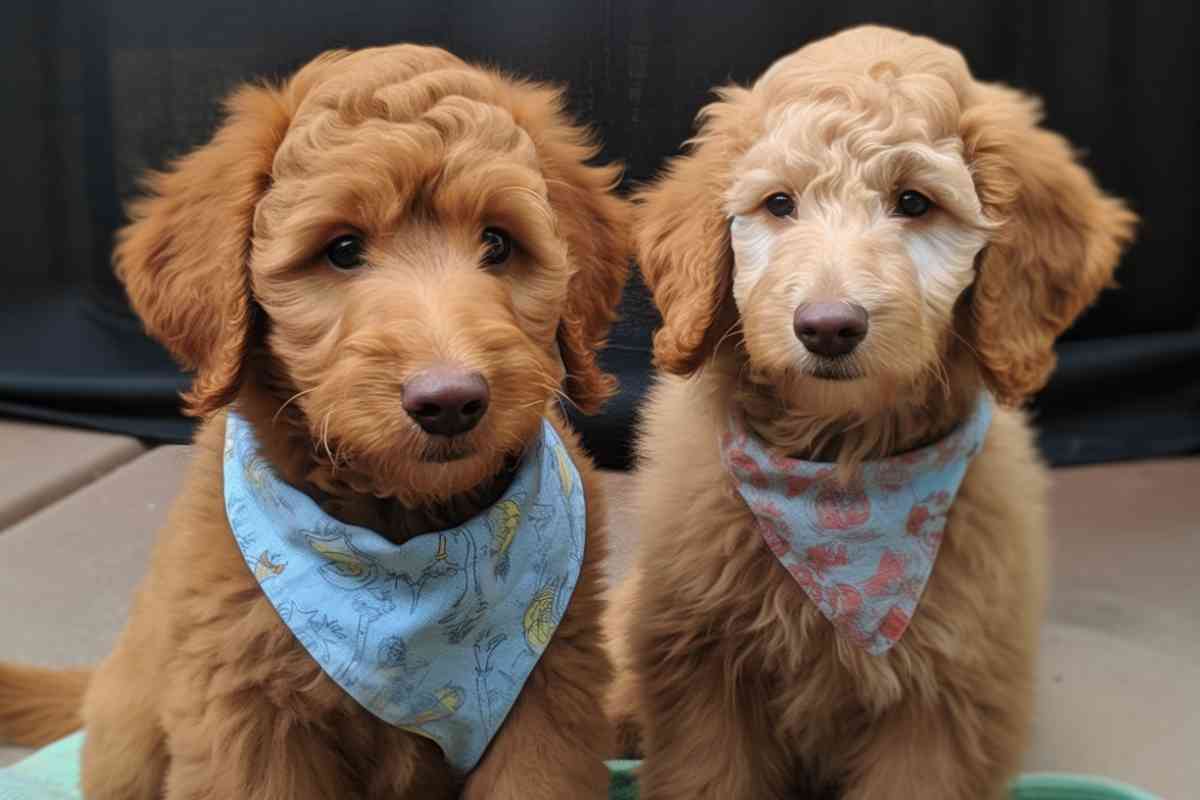
But did you know there’s more to the Goldendoodle than meets the eye? Dive into the world of Goldendoodle genetics to learn exactly what to expect from the F1 Goldendoodle.
Want to know more about the Doodle that’s closer to the Poodle, the F1b? Here’s a thorough guide to the F1b Goldendoodle.
How about a smaller version? You can get an F1 Goldendoodle in mini too.
F1 Goldendoodle: Everything You Need to Know
F1 Goldendoodles are a cross between a purebred Golden Retriever and a purebred Poodle making them half poodle and half golden retriever. They’re known for their low shedding coat and health benefit of hybrid vigor. They can display the sensitivity and curly coat of the poodle or the outgoing affability and straight coat of the golden retriever, and everything in between.
Understanding the Parent Breeds
Purebred Golden Retriever
Golden Retrievers, one of the most cherished dog breeds worldwide, trace their origins back to the Scottish Highlands in the mid-19th century. Initially bred for hunting, these dogs are a result of meticulous crossbreeding involving the Yellow Retriever, the now-extinct Tweed Water Spaniel, and later, a mix of Bloodhounds, Irish Setters, and more Tweed Water Spaniels.
The aim was to craft a breed adept at navigating Scotland’s rainy climate and rugged terrains, especially for hunting waterfowl. Today, their reputation extends far beyond hunting.
Recognized for their lustrous golden coats and a demeanor that radiates friendliness, intelligence, and devotion, Golden Retrievers have become a household favorite. Their versatility shines as they excel not just as family companions but also in specialized roles like Therapy, Service, Guide, and Search & Rescue.
Their prominence in popular culture, combined with their amiable nature, cements their status as one of the top dog breeds in the U.S. and beyond.
However, potential owners should be mindful of certain health concerns, including cancer and hip and elbow dysplasia. Regular veterinary check-ups and informed breeding practices can mitigate many of these risks.
The Purebred Poodle
The Poodle, often associated with France as its national dog, is in fact rooted in its role as a water retriever, evident from its name and protective coat. Originating as the Caniche or “duck dog,” this breed boasts a rich history that transcends its modern-day reputation for elegance.
Poodles come in three sizes: the large Standard, the medium-sized Miniature, and the petite Toy, but all share a distinctive curly coat that ranges in colors from apricot to blue and silver. This coat, while stylish, serves a practical purpose, protecting the dog in cold waters.
Poodles are celebrated for their intelligence and adaptability. They’re friendly, great with kids, and generally healthy, though they can be prone to certain conditions. Their intelligence has not only made them a favorite in show rings but also in various service roles and popular culture.
Whether in movies or historical records, the Poodle’s blend of beauty, brains, and affable nature has solidified its status as a beloved breed worldwide.
The Classification System For Goldendoodles
Goldendoodles are bred from Poodles and Golden Retrievers in hopes of making a pup with the best of both of them, but the genetic makeup and inherent characteristics of the resulting puppies can be challenging to predict. Here are how Goldendoodles are characterized, depending on their mixup of Poodle and Golden.
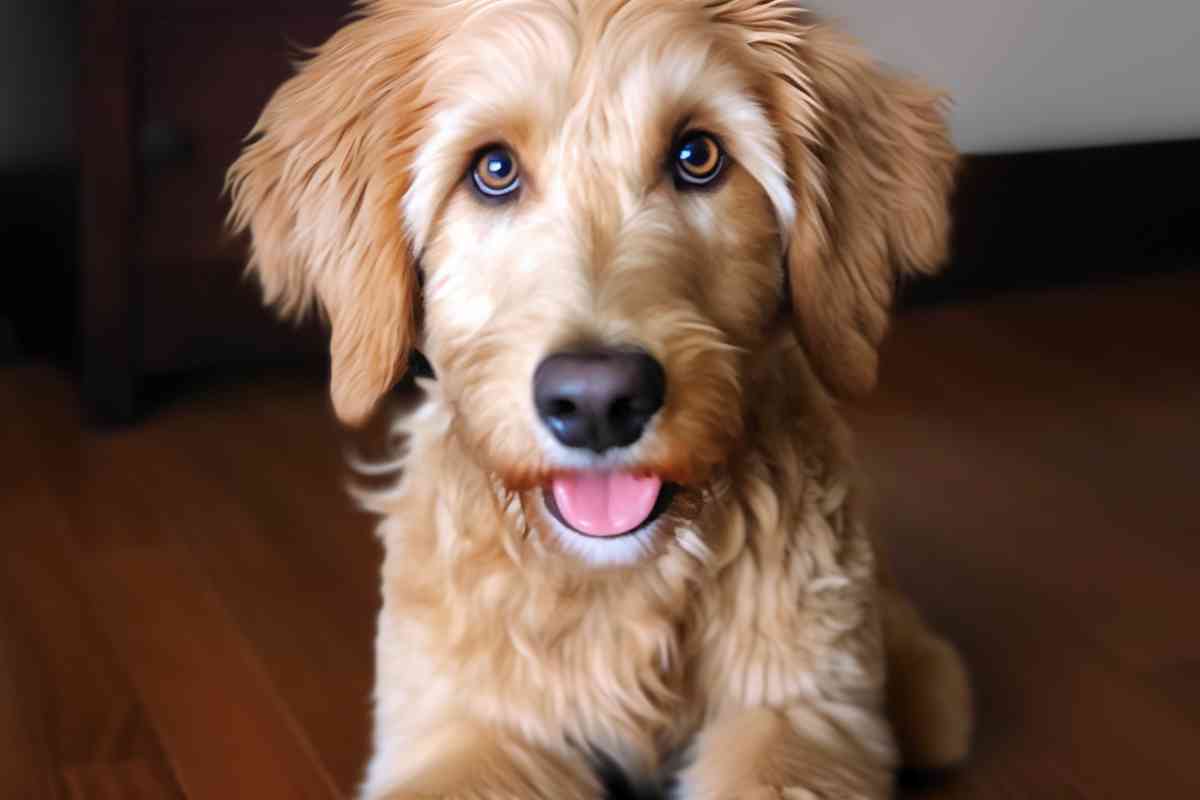
F1 Goldendoodle
The first-generation or F1 Goldendoodle is the direct offspring of a purebred Golden Retriever and a purebred Poodle. These Goldendoodles typically have a wavy coat texture and are renowned for their hybrid vigor.
They come in a spectrum of sizes, from the petite miniature to the larger standard, and their colors can vary from cream to golden and even a rich red.
F1b Goldendoodles
An F1b Goldendoodle emerges from the backcrossing of an F1 Goldendoodle with a purebred Poodle. This results in a Goldendoodle carrying 75% Poodle genes, which often translates to a curlier and more hypoallergenic coat.
While their size and color range mirror the F1 generation, their coat is distinctively curlier and is a boon for those with allergies.
F2 Goldendoodles
Breeding two F1 Goldendoodles gives rise to the second-generation F2 Goldendoodle. These dogs can inherit a mix of traits from both parent F1 Goldendoodles, leading to a variety of coat types, from the gentle wave to the tighter curl.
In terms of size and color, they align closely with the F1 and F1b generations.
F2b Goldendoodles
The F2b Goldendoodle is a product of breeding an F1 with an F2 Goldendoodle. This mix ensures a Goldendoodle with a more predictable set of traits, especially in terms of coat type and temperament. Their coats can range from wavy to curly, and they come adorned in a myriad of colors.
F3 Goldendoodles
The third-generation F3 Goldendoodle can have diverse parentage, including two F2 Goldendoodles or an intricate mix of F2 and F1b. Depending on their lineage, their genetic makeup can vary, leading to a spectrum of coat types and temperaments. Typically, F3 Goldendoodles can sport coats from wavy to curly and inherit a blend of characteristics from their parent breeds.
Multigen Goldendoodles
Delving into the world of Multigen or multi-generation Goldendoodles means exploring a lineage that spans beyond three generations. With a rich tapestry of Goldendoodle breeding behind them, these dogs offer a vast genetic diversity.
These generations of Goldendoodle are less predictable in terms of desirable traits like no-shedding and good temperament. Adoption of these dogs should be done with caution.
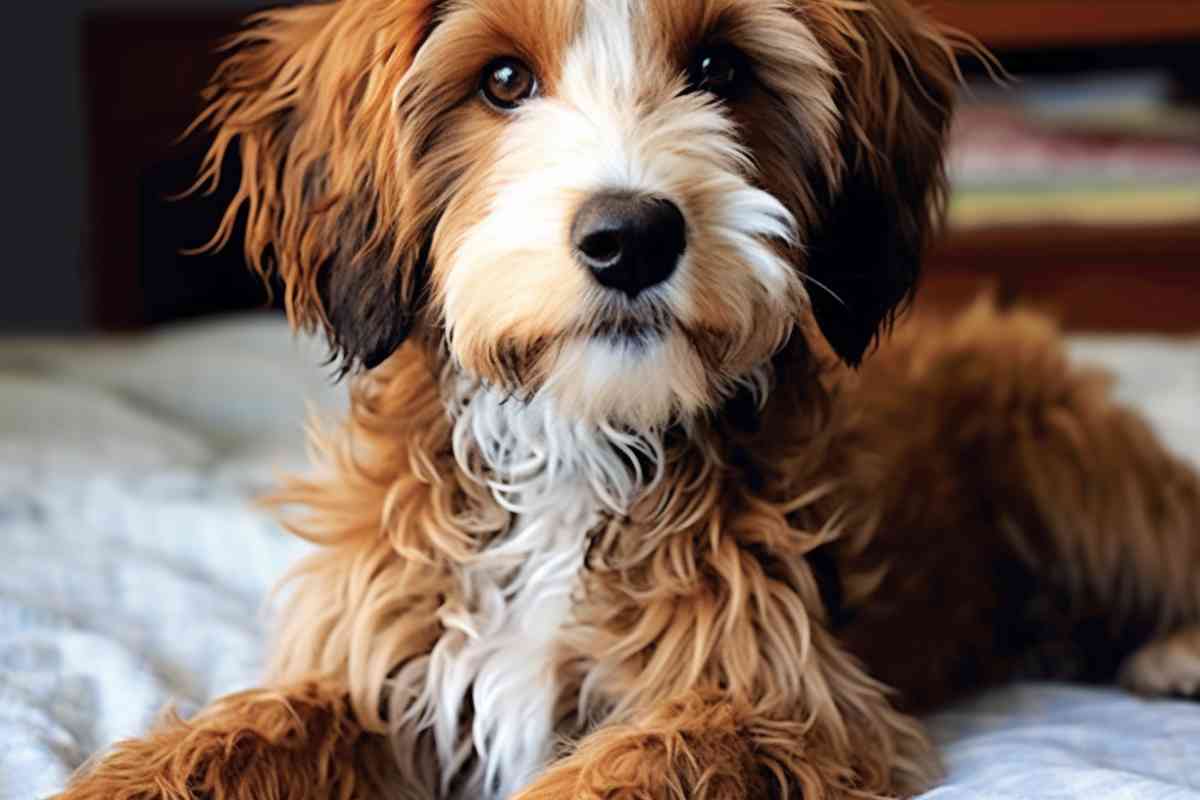
Characteristics of the F1 Goldendoodle
Size and Weight
The F1 Goldendoodle has a range of sizes and weights, influenced by several distinct factors.
The size of the Poodle parent is a significant determinant in the size of the F1 Goldendoodle. When a Golden Retriever is paired with a Standard Poodle, the offspring, often known as the “Standard Goldendoodle,” can weigh between 50 to 90 pounds.
Conversely, a union with a Mini Poodle typically produces the “Mini Goldendoodle,” which weighs around 30 to 50 pounds. It’s noteworthy that while Toy Poodles are smaller, achieving a “Toy” Goldendoodle size with an F1 breeding is uncommon. To realize such petite sizes, one often needs to explore beyond the F1 generation.
Another influencing factor is the size of the Golden Retriever parent. A larger Golden Retriever, even when mated with a Mini or Toy Poodle, can result in a more substantial F1 Goldendoodle.
An intriguing aspect of crossbreeding is the phenomenon known as hybrid vigor. This can sometimes lead to F1 Goldendoodles growing larger than both of their purebred parents, a testament to the enhanced vitality that comes from genetic diversity.
For those aspiring for the smallest of Goldendoodles, it’s crucial to understand that such sizes are typically achieved in generations succeeding F1. Delving deeper into the breeding lineage, with meticulous breeding strategies, can yield these dainty doodles. Always consult with reputable dog breeders to gain insights and ensure you find the ideal pet to match your preferences.
Diversity in Coat Types of F1 Goldendoodles
While the range of possible coat types is broad, spanning from the curly Poodle coat to the flat Retriever coat, most F1 Goldendoodles’ coats can be categorized into three primary types: flat, wavy, and curly.
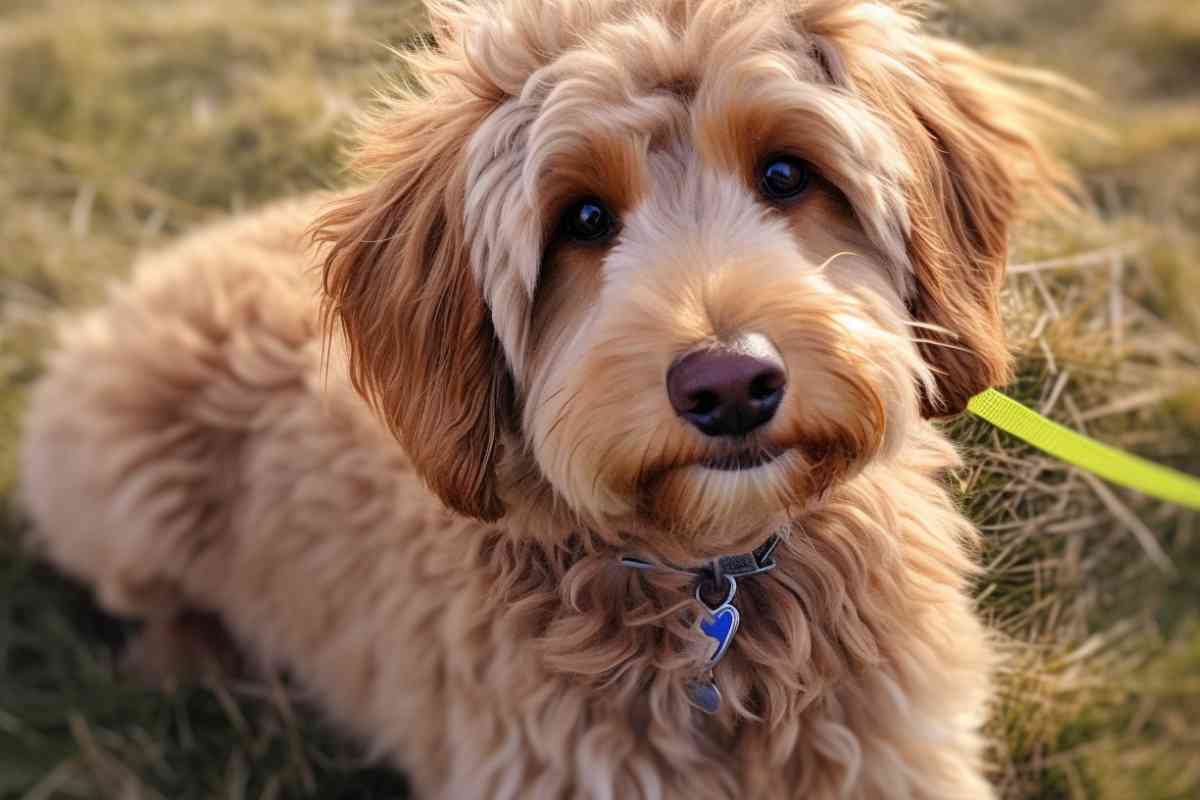
A study on canine genetics sheds light on how coat types are inherited. The interplay of multiple genes determines the texture, length, and curliness of a dog’s coat. In the case of F1 Goldendoodles, the combination of genes from both parent breeds can result in a spectrum of coat types.
Flat Coat
Resembling the Golden Retriever’s coat, the flat coat is straight and lies close to the body. It’s the least common among F1 Goldendoodles.
This coat type requires regular brushing, at least once a week, to prevent matting and to keep it clean and shiny. Regular grooming sessions will also help in reducing shedding and ensuring the coat remains healthy.
Wavy Coat
The wavy coat, often termed the “shaggy” or “fleece” coat, is the most common type found in F1 Goldendoodles. It’s a perfect blend of the Poodle’s curls and the Golden Retriever’s straight hair.
This coat type requires daily brushing to prevent tangles and mats. It’s also less prone to shedding, making it a favorite among allergy sufferers.
Curly Coat
Taking after the Poodle parent, the curly coat is dense and resembles tight ringlets. While this coat type is hypoallergenic and sheds the least, it demands the most care.
Regular and thorough brushing, almost daily, is essential to prevent the curls from matting.
All coat types require periodic professional grooming is recommended to keep the coat in top condition and to give it a neat appearance.
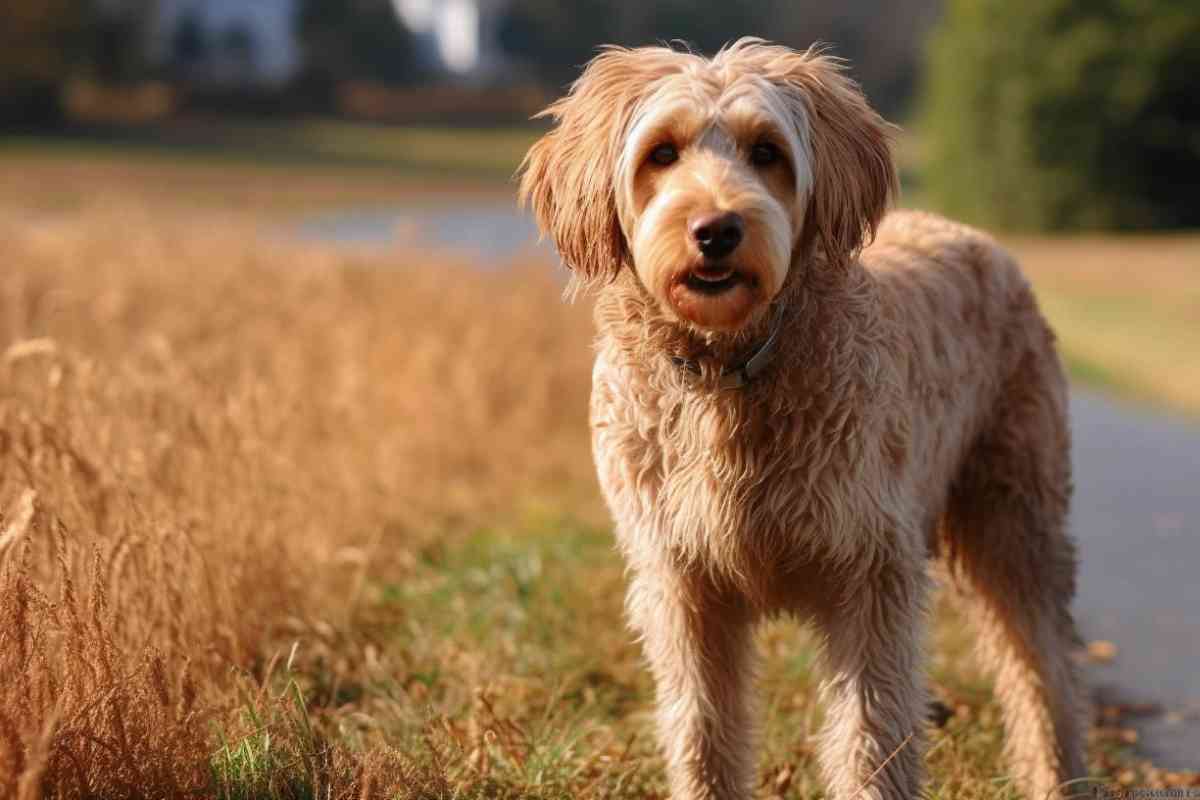
F1 Goldendoodle Colors and Their Inheritance
Goldendoodles exhibit a spectrum of colors, largely influenced by their parent breeds. The complex coat color genetics in dogs creates a diverse range of hues in the F1 Goldendoodle.
The Golden Retriever lineage primarily contributes shades of cream, apricot, and red. These hues are governed by a single gene, with the specific shade determined by the intensity of the inherited gene.
On the other hand, the Poodle lineage introduces a broader palette, including creams, apricots, reds, as well as black, chocolate (dark brown), silver, and gray. Moreover, Poodles contribute unique color patterns to the Goldendoodle coat, such as parti, merle, phantom, and brindle.
When considering the outcome of breeding specific color combinations, it’s essential to understand the underlying genetics:
- Breeding with a Black Poodle: If a Golden Retriever is paired with a black Poodle, the resulting puppies could inherit the black color from the Poodle, given that black is a dominant color gene. However, the influence of the Golden Retriever’s genes might result in some puppies showcasing shades of cream, apricot, or red.
- Breeding with a Poodle Carrying the Fading Gene: Poodles with the fading gene can produce puppies whose coat color lightens or “fades” as they age. When such a Poodle is bred with a Golden Retriever, the puppies might inherit this fading trait, leading to a change in their coat color as they mature.
- Breeding with a Multicolored Poodle: Multicolored Poodles, such as those with parti, merle, or phantom patterns, can introduce a mix of colors and patterns when bred with Golden Retrievers. For instance, a parti Poodle (one with large patches of two distinct colors) can produce Goldendoodle puppies with similar two-toned coats.
It’s worth noting that while the Golden Retriever contributes primarily cream, apricot, and red shades, the Poodle’s diverse color genetics play a significant role in the final coat color of Goldendoodle puppies.
For those aiming for the iconic gold color in Goldendoodle puppies, breeding with a cream or apricot Poodle is common, as these colors align closely with the Golden Retriever’s natural hues.
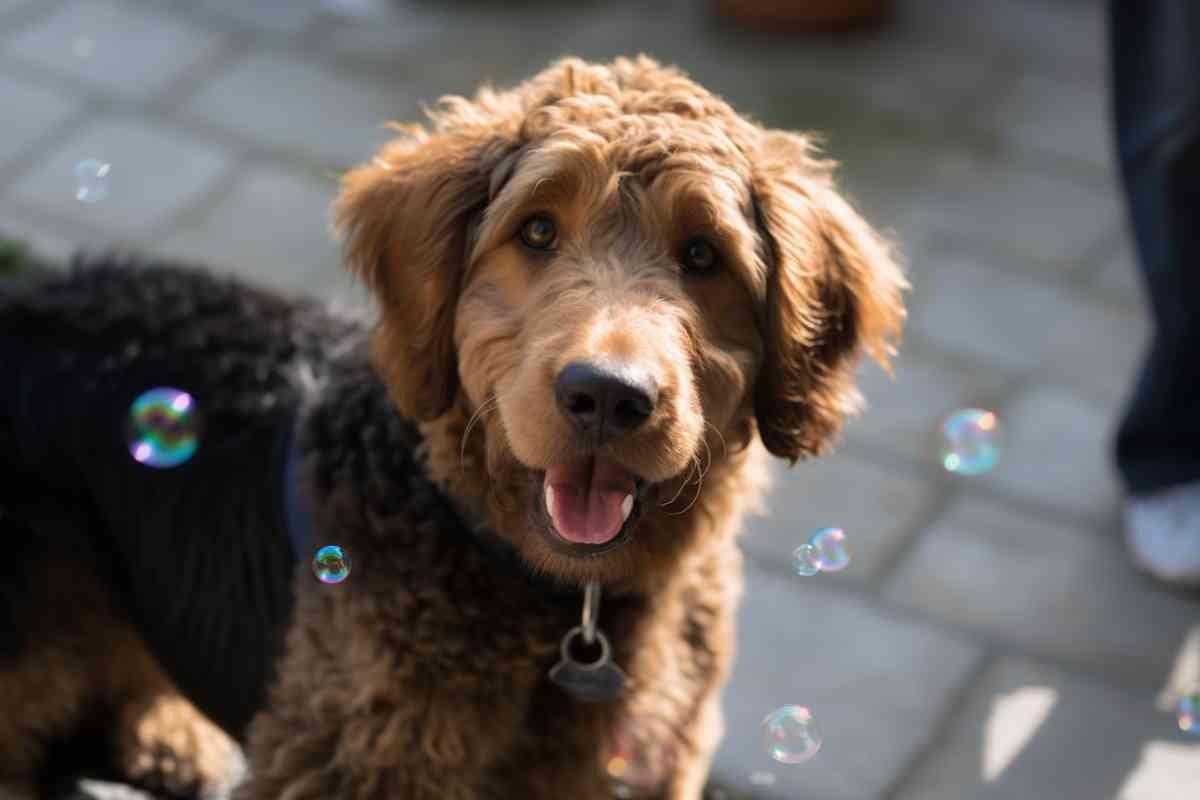
Temperament of F1 Goldendoodles
Goldendoodles, especially the F1 generation, are known for their friendly and affectionate nature. Their temperament is influenced by the characteristics of both parent breeds.
Inheritance from the Golden Retriever: Golden Retrievers are renowned for their gentle and friendly disposition. They are social, eager to please, and get along well with children and other pets. This breed is also known for its intelligence and trainability. When an F1 Goldendoodle inherits these traits, you can expect a dog that is friendly, sociable, and easy to train.
Inheritance from the Poodle: Poodles are intelligent, alert, and active. They are also known for their loyalty and can be very affectionate with their families. Poodles are often described as having a more reserved nature compared to Golden Retrievers. When these traits are passed on to an F1 Goldendoodle, they contribute to the dog’s intelligence, alertness, and sometimes a slightly more reserved nature.
A study titled “Expression of Behavioural Traits in Goldendoodles and Labradoodles” delves into the behavioral traits of these hybrid breeds. The research indicates that Goldendoodles often exhibit a mix of behaviors from both parent breeds. For instance, they might have the sociability of a Golden Retriever combined with the alertness of a Poodle.
Coat Types and Their Influence on Temperament: While it might sound surprising, the coat type of a Goldendoodle can sometimes give hints about its temperament. For instance, F1 Goldendoodles with curlier coats, indicating a stronger Poodle influence, might be slightly more reserved than those with wavier or straighter coats. However, it’s essential to note that individual temperament can vary, and upbringing, training, and socialization play significant roles.
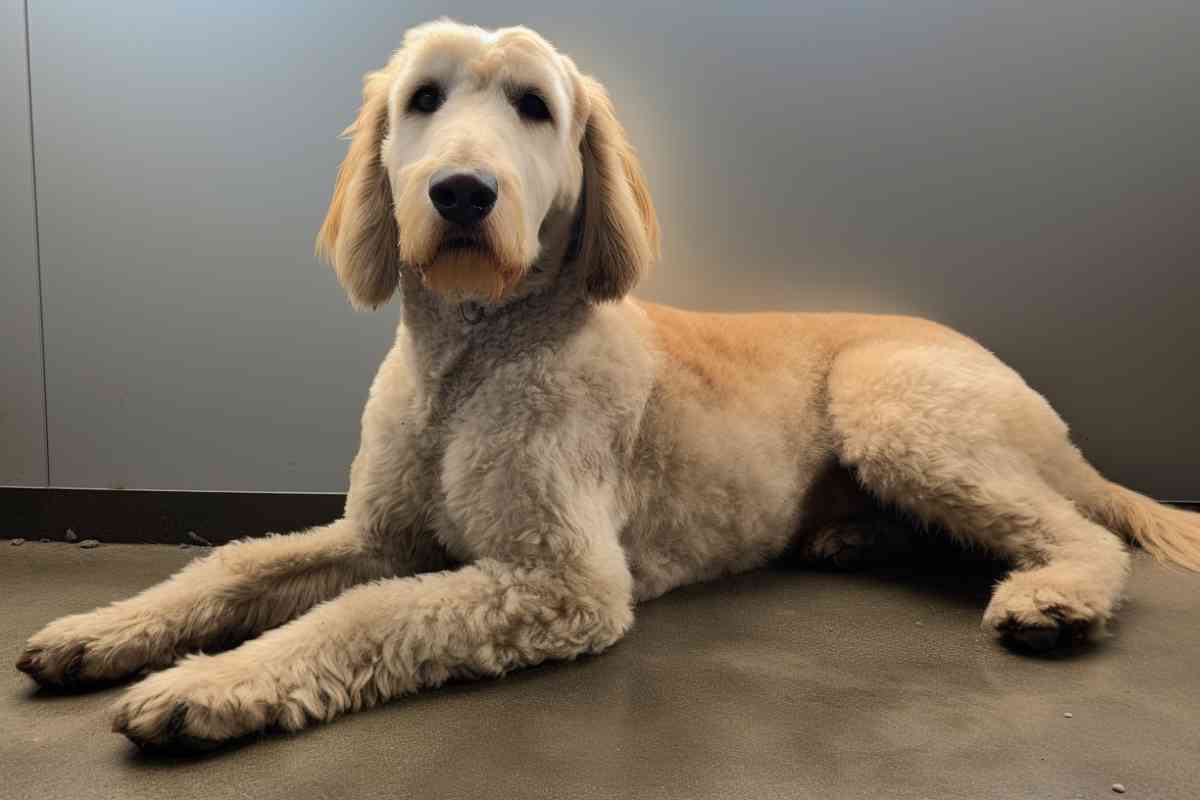
In conclusion, the temperament of an F1 Goldendoodle is a blend of the best traits from both parent breeds. They are friendly, intelligent, and versatile dogs, making them excellent companions for families, singles, and seniors alike.
Health Issues
Golden Retriever Health Issues: Golden Retrievers are known for their friendly and gentle temperament, but like all breeds, they have their own set of health concerns.
Some of the most common health issues in Golden Retrievers include hip dysplasia, elbow dysplasia, and certain heart conditions. They are also prone to specific types of cancers, such as hemangiosarcoma and osteosarcoma.
Another concern is progressive retinal atrophy, which can lead to blindness. Regular check-ups and being aware of these common health issues can help in early detection and treatment. Golden Retriever Lifetime Study
Poodle Health Issues: Poodles, whether standard, miniature, or toy, come with their own set of health challenges. They are often prone to hip dysplasia, a condition where the hip joint doesn’t develop properly, leading to arthritis.
Another concern is a group of eye disorders known as Progressive Retinal Atrophy (PRA), which can eventually cause blindness. Poodles may also suffer from certain skin conditions and are susceptible to bloat, a life-threatening condition where the stomach twists upon itself.
Regular grooming and check-ups can help in identifying and managing these health issues early on. Poodle Health Issues & Problems
Health Concerns in F1 Goldendoodles: When it comes to F1 Goldendoodles, they can inherit health issues from both parent breeds. This means they could potentially face the health challenges mentioned above.
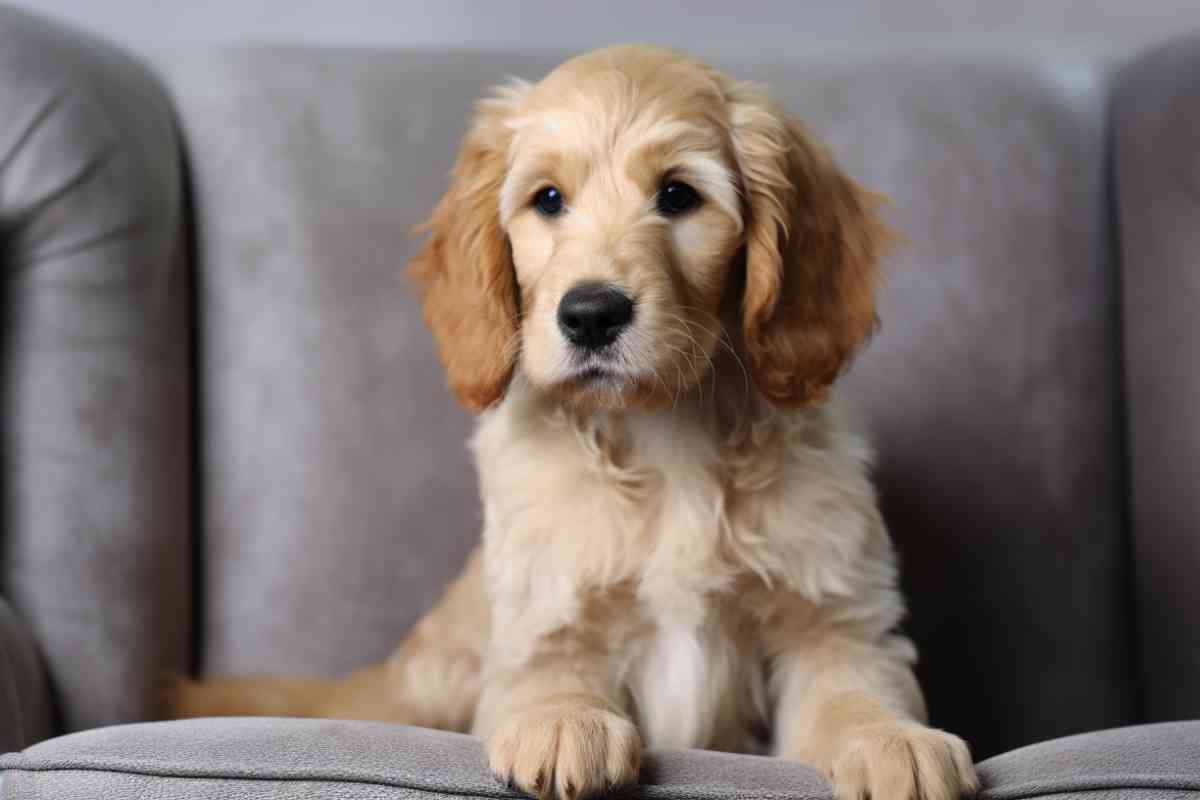
However, there’s a concept known as “hybrid vigor,” suggesting that crossbred dogs like the Goldendoodle can be healthier and less prone to genetic diseases than their purebred counterparts. Hybrid Vigor in Dogs
Specifically, for Mini Goldendoodles, because they are bred from a larger (Golden Retriever) and a smaller dog (Miniature or Toy Poodle), they might be more susceptible to joint issues like hip or elbow dysplasia. It’s essential to be aware of these potential health problems and ensure regular veterinary check-ups for early detection and management.
In conclusion, while F1 Goldendoodles can be a relatively healthy breed benefiting from hybrid vigor, they can still inherit health issues from their parent breeds. Regular veterinary care, a balanced diet, and proper exercise can go a long way in ensuring a healthy and happy life for your Goldendoodle.
Price of F1 Goldendoodle
You can find F1 Goldendoodles for sale from about $300 to well over $3000. Professional breeders who health test, DNA check, and back up their puppies charge more. Here are some breeders and their prices.
Goldilocks Goldendoodle
- Breed: They breed F1 and F1B Goldendoodles.
- Size and Prices:
- F1 Mini Goldendoodles: 25-35 lbs, priced at $2,500. Details
- F1 Standard Goldendoodles: 55-65 lbs, priced at $2,500.
- F1B Medium Goldendoodles: 35-45 lbs, priced at $2,500.
- F1B Micro Goldendoodles: 15-25 lbs, priced at $2,800.
- Health Testing: They provide a one-year genetic health guarantee along with the first set of shots, deworming, microchip, heart-worm medicine, and vet approval.
- Website Link: Goldilocks Goldendoodles
Safari Doodles
- Breed: They breed F1 and F1B Goldendoodles.
- Size and Prices:
- F1 Mini Goldendoodles: 25-35 lbs
- F1 Standard Goldendoodles: 55-65 lbs
- F1B Mini Goldendoodles: 15-25 lbs
- F1B Medium Goldendoodles: 35-45 lbs
- All puppies, regardless of size, variety, color, or sex, are priced at $3,500.
- Health Testing: They fully health test their parent dogs, including OFA Hips, OFA Elbows, OFA Heart, OFA Eyes, and DNA Full panel of all relevant diseases.
- Website Link: GoldenDoodle Puppies (Safari Doodles)
Golden Acres Puppies
- Breed: They breed F1 Goldendoodles.
- Size and Prices:
- F1 Standard Goldendoodles: Expected weight of 55-65 lbs, priced at $2,500.
- Health Testing: Specific health testing details are not mentioned on the page, but they might be available upon contacting the breeder.
- Website Link: Golden Acres Puppies
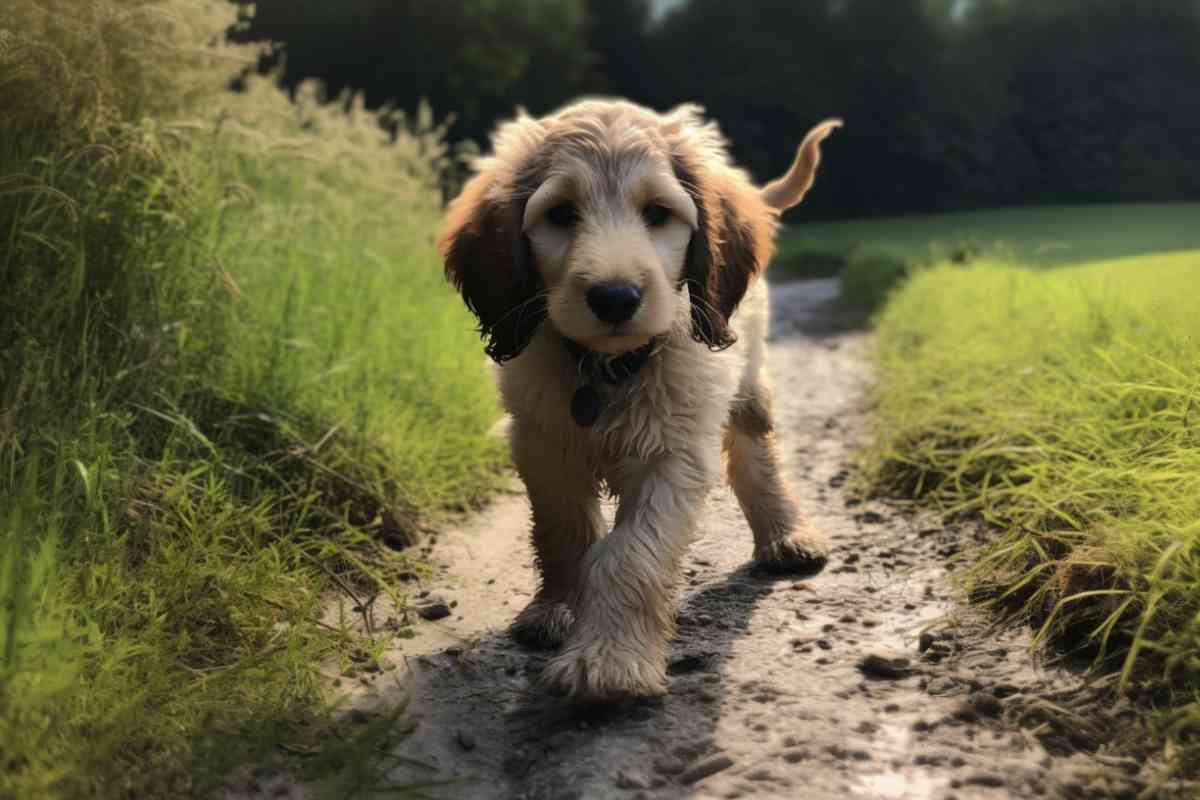
Frequently Asked Questions
What is a F1B Goldendoodle?
A F1B Goldendoodle is a second-generation Goldendoodle. It is the result of breeding a F1 Goldendoodle with a purebred Poodle. This results in a dog that is 75% Poodle and 25% Golden Retriever. F1B Goldendoodles are often more hypoallergenic than F1 Goldendoodles due to their higher percentage of Poodle genes.
What is better F1 or F1B Goldendoodle?
The answer to this question depends on your personal preferences. F1 Goldendoodles are 50% Poodle and 50% Golden Retriever, while F1B Goldendoodles are 75% Poodle and 25% Golden Retriever. F1B Goldendoodles are often more hypoallergenic than F1 Goldendoodles, but they may also have a curlier coat. F1 Goldendoodles may have a straighter coat and may shed slightly more than F1B Goldendoodles.
What is F1 and F2 Goldendoodles?
F1 Goldendoodles are the result of breeding a purebred Poodle with a purebred Golden Retriever. F2 Goldendoodles are the result of breeding two F1 Goldendoodles. F2 Goldendoodles may have a wider range of coat types and personalities than F1 Goldendoodles.
What is a F1 Goldendoodle?
A F1 Goldendoodle is a first-generation Goldendoodle. It is the result of breeding a purebred Poodle with a purebred Golden Retriever. F1 Goldendoodles are often hypoallergenic and have a wavy or curly coat.
What is the weight of a F1 Goldendoodle?
The weight of a F1 Goldendoodle can vary depending on the size of the Poodle and Golden Retriever parents. On average, F1 Goldendoodles weigh between 50 and 90 pounds.
Are F1 Goldendoodles hypoallergenic?
F1 Goldendoodles can be hypoallergenic, but it depends on the individual dog and the amount of Poodle genes they have. Poodles are hypoallergenic dogs, but Golden Retrievers are not. F1 Goldendoodles may have a wavy or curly coat that sheds less than a Golden Retriever’s straight coat. However, some F1 Goldendoodles may still cause allergies in some people.